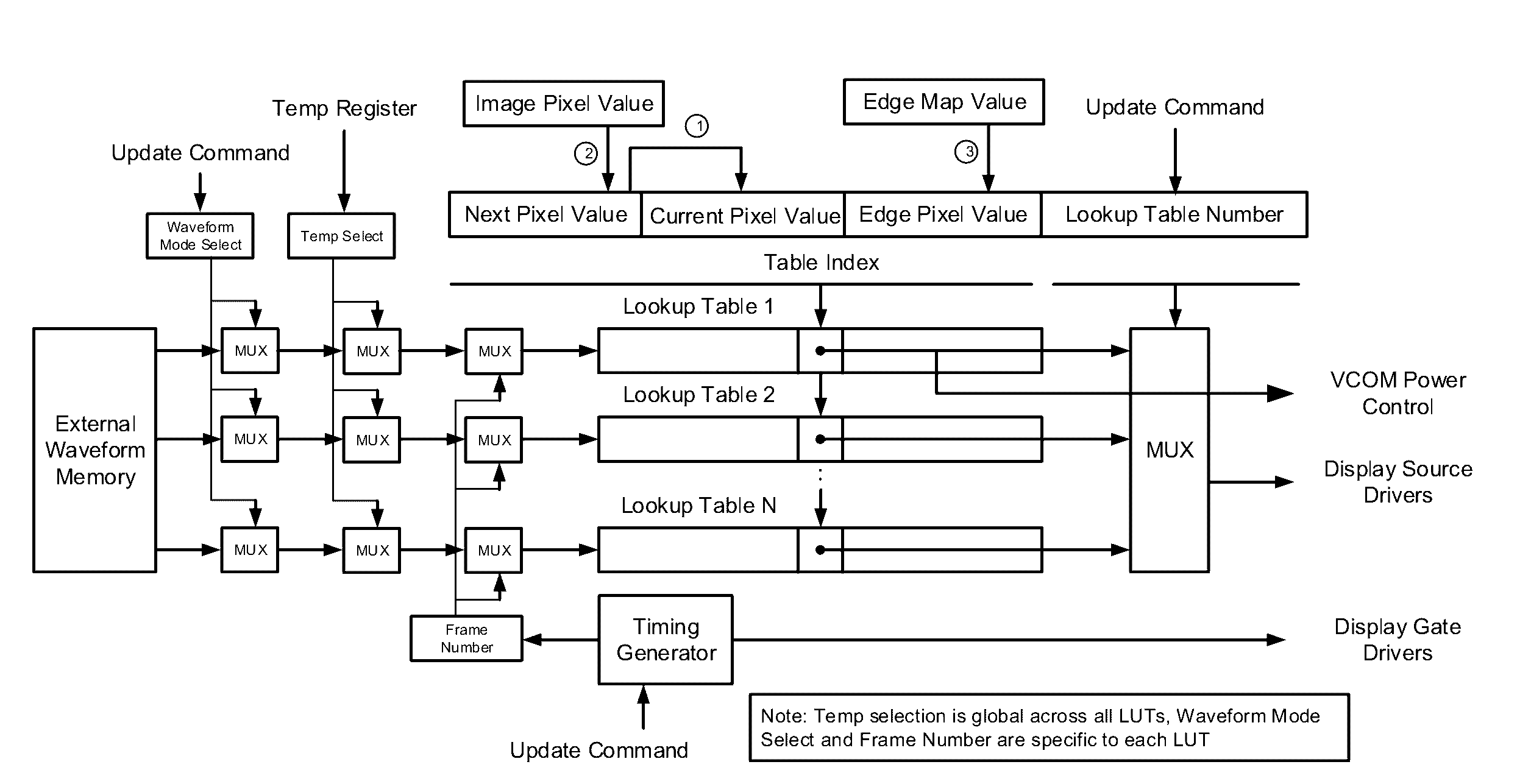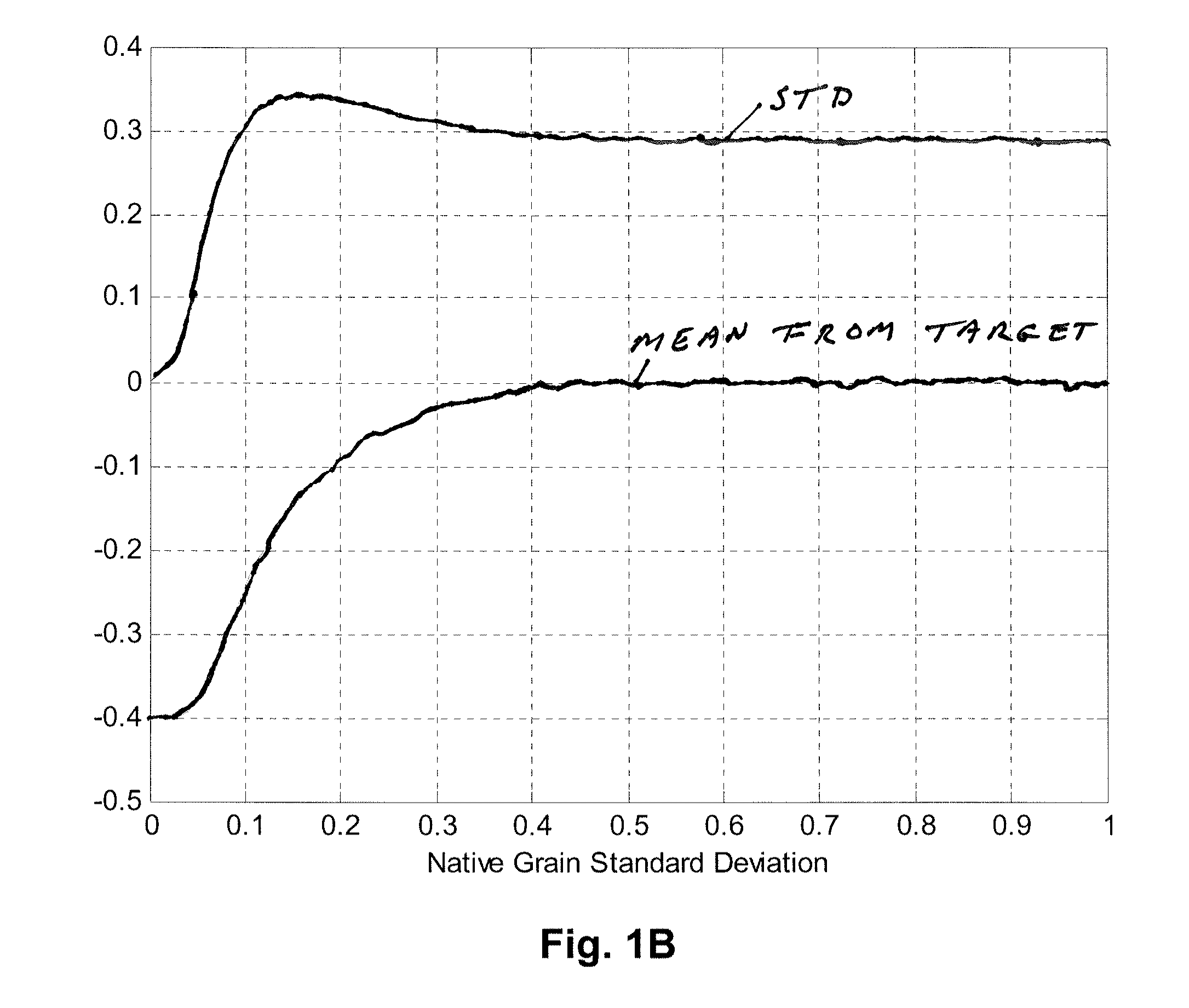Methods for driving electro-optic displays
a technology of electrooptic displays and displays, applied in optics, instruments, static indicating devices, etc., can solve the problems of preventing their widespread use, inadequate service life of these displays, and gas-based electrophoretic media being susceptible to the same types of problems, so as to minimize the edge effect, the effect of reducing the visibility of the edge defects present, and reducing the edge
- Summary
- Abstract
- Description
- Claims
- Application Information
AI Technical Summary
Benefits of technology
Problems solved by technology
Method used
Image
Examples
Embodiment Construction
[0092]As already described, the present invention has three main aspects and provides a variety of methods for improving the images displayed on electro-optic displays. While the various methods of the invention will mainly be described separately below, it will be apparent to those skilled in the technology of electro-optic displays that in practice a single physical display may make use of more than one of the methods of the present invention, either simultaneously or sequentially. For example, a single display might make use of a two-part waveform according to the first aspect of the present invention in order to reduce the pre-rendering burden on the controller, and might also make use of an edge elimination method according to the third aspect of the present invention in order to eliminate edge effects in the images displayed.
[0093]Part A: Two-Part Waveforms
[0094]As explained above, the first aspect of the present invention provides a “two-part waveform” method of driving an el...
PUM
| Property | Measurement | Unit |
|---|---|---|
| optical state | aaaaa | aaaaa |
| optical states | aaaaa | aaaaa |
| gray optical state | aaaaa | aaaaa |
Abstract
Description
Claims
Application Information
 Login to View More
Login to View More - R&D
- Intellectual Property
- Life Sciences
- Materials
- Tech Scout
- Unparalleled Data Quality
- Higher Quality Content
- 60% Fewer Hallucinations
Browse by: Latest US Patents, China's latest patents, Technical Efficacy Thesaurus, Application Domain, Technology Topic, Popular Technical Reports.
© 2025 PatSnap. All rights reserved.Legal|Privacy policy|Modern Slavery Act Transparency Statement|Sitemap|About US| Contact US: help@patsnap.com



